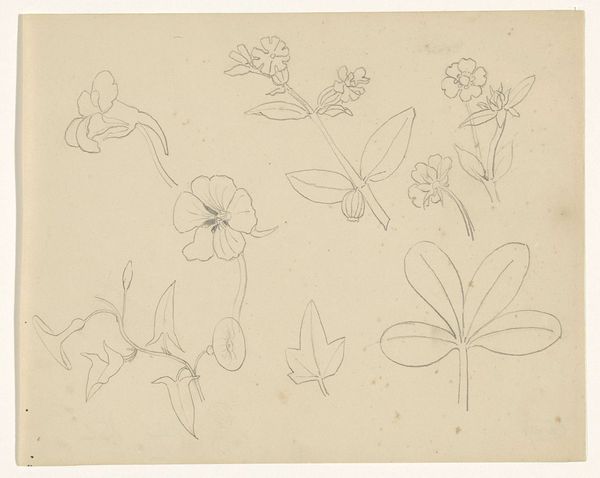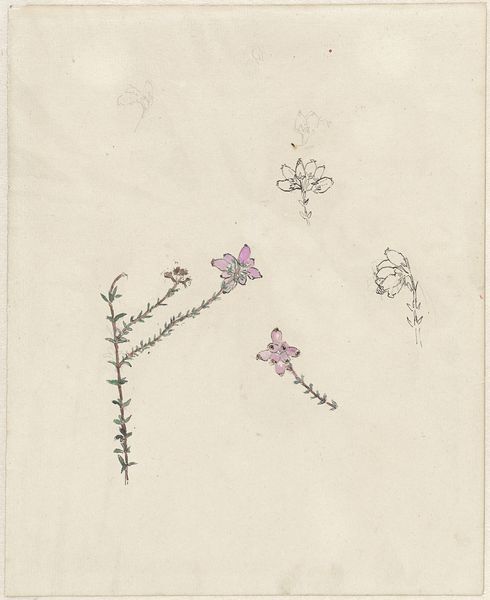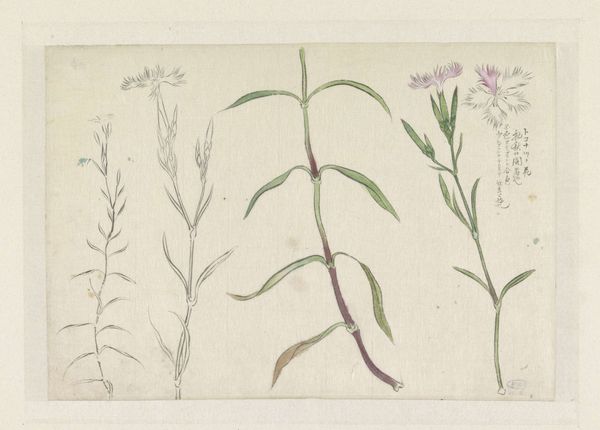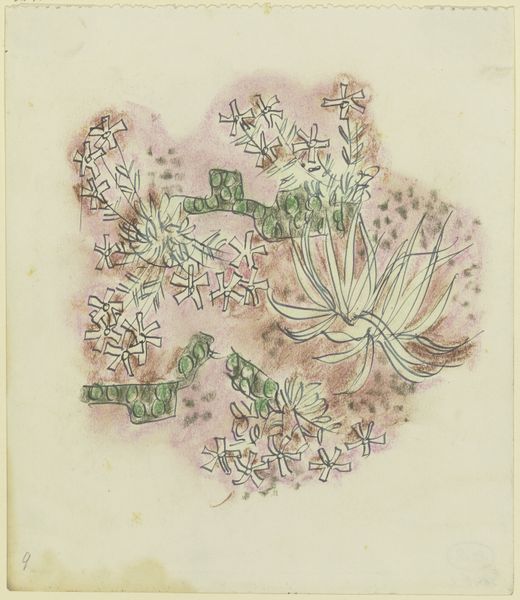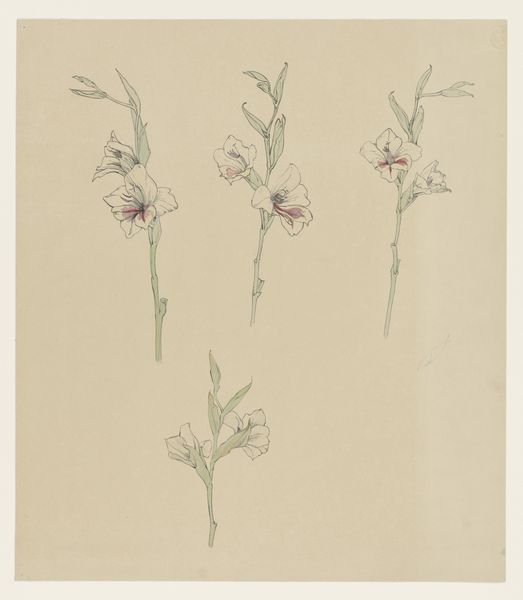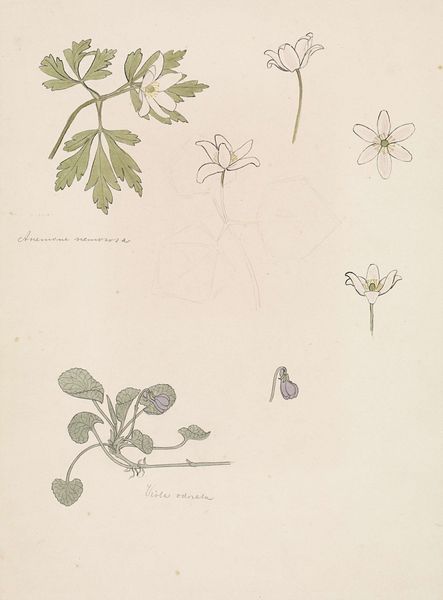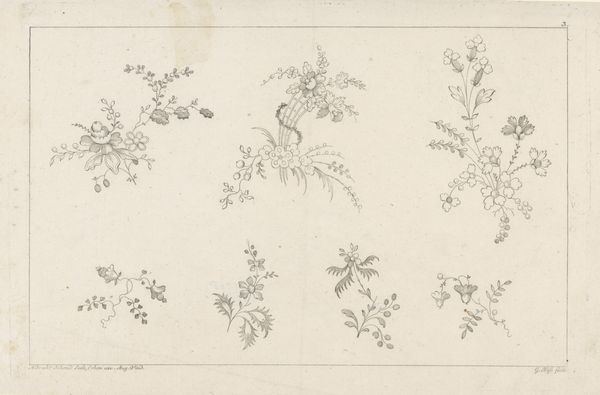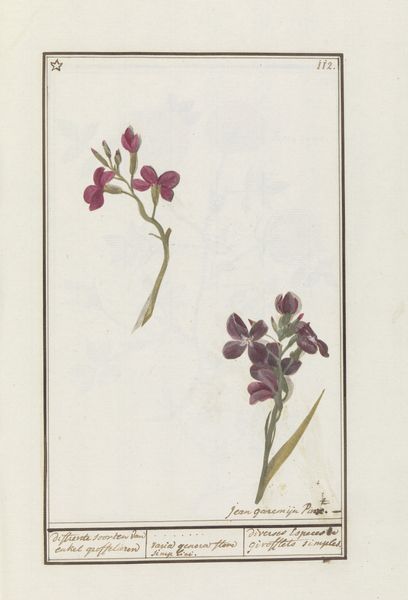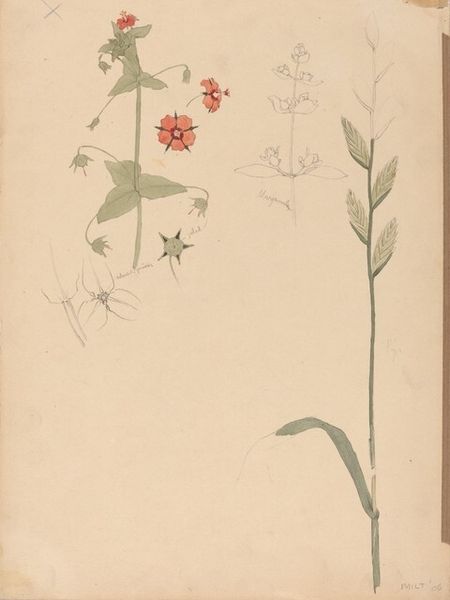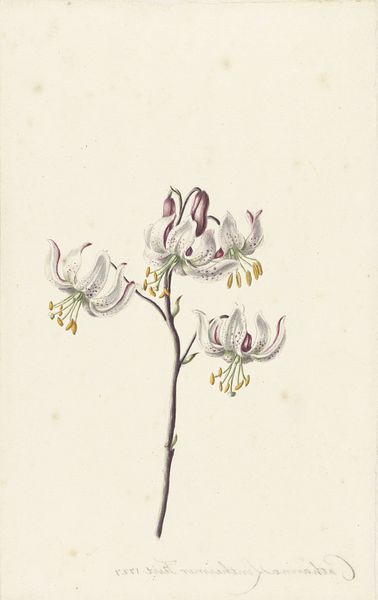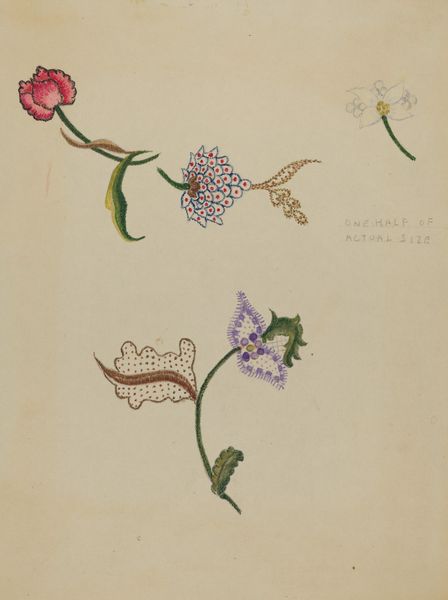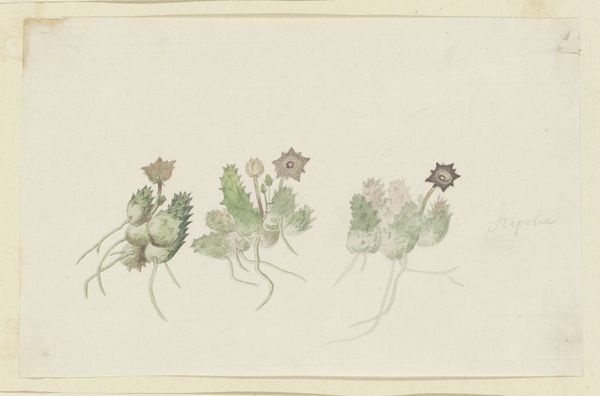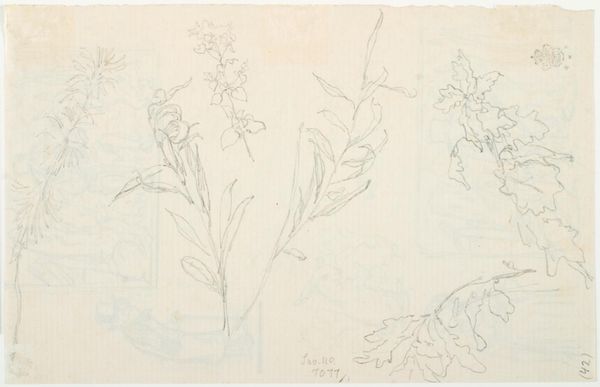
Dimensions: height 491 mm, width 628 mm
Copyright: Rijks Museum: Open Domain
Editor: Here we have Julie de Graag's "Studieblad met gladiolen en appelbloesem," dating sometime between 1887 and 1924. It's a botanical study rendered in pencil and watercolor on paper. There's something very delicate about the linework. What stands out to you in terms of the making of this piece? Curator: What intrigues me are the presumed economic and social conditions enabling its production. Who was de Graag creating this for, and with what resources? Was this commissioned work, part of a formal study, or simply an act of personal observation and documentation afforded by her socioeconomic privilege? Editor: That's interesting, I was more focused on the composition itself, how the individual floral studies are placed on the page, but your questions open up a whole new perspective. Do you think the medium itself, watercolor and pencil, tells us something about the potential function or intended audience of the piece? Curator: Absolutely. Pencil and watercolor were relatively accessible materials. The choice speaks to the scale and intimacy of production; not demanding the industrial might of oil paints or large-scale canvases. It also speaks to its possible distribution – as part of a larger catalogue of studies, maybe even something akin to a commercial venture, where multiple prints were being generated to sell. Was she part of a growing class of female artists, making her income this way, or working independently, defining herself and maybe even other artists, who chose art to earn a living and contribute to society's economy? Editor: So, you’re suggesting we can see the art as connected to a shift in artistic production and distribution, linking to larger questions of class, gender and economy in that era? Curator: Precisely. These are not just pretty flowers; it’s a material record, intertwined with social relations and perhaps an independent woman asserting her role within a rapidly changing marketplace for art. It encourages us to challenge conventional assumptions about art's purpose. Editor: That completely reframes my initial appreciation. It's amazing how analyzing materials and social contexts adds layers of meaning. Curator: Exactly! And it reminds us to always consider who benefits from art, and who is making it—and why.
Comments
No comments
Be the first to comment and join the conversation on the ultimate creative platform.
